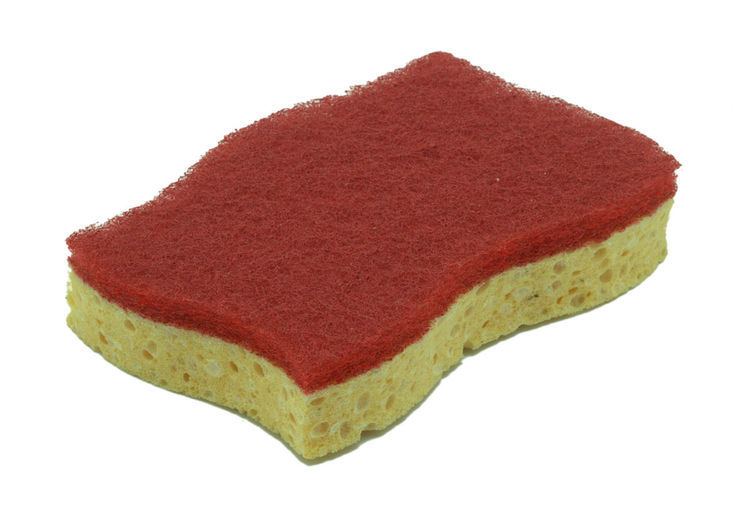 | ||
A sponge is a tool or cleaning aid consisting of soft, porous material. Usually used for cleaning impervious surfaces, sponges are especially good at absorbing water and water-based solutions.
Contents
Etymology
Sponge; from the Greek σπόγγος (spoggos).
Material
Sponges are commonly made from cellulose wood fibers or foamed plastic polymers. Some natural sponges are still sold, with most now used either as body or facial sponges (bath sponges) or as tools for sponge painting. Bath sponges help cleanse the skin by scraping away the dead skin and washing away dirt.
Besides sponges formed from plastic polymers, the three other categories of widely available synthetic sponges are low-density polyether (known as non-absorbent sponges), PVA (a highly absorbent material for use in medicine), and polyester.
Polyester sponges can be subdivided into a variety of types, some of which are reticulated (artificially broken-in) for ease of use. One type, double-blown polyester, has a high water-retention ability approaching or equaling that of PVA sponges, but with visible pores and more diverse uses.
Harboring bacteria
Because it is primarily made of wood fiber, a cellulose sponge can be a medium for the growth of harmful bacteria or fungi, especially when it is allowed to remain wet between uses.
Cleaning
Several methods have been used to clean sponges. Studies have investigated the use of the microwave to clean non-metallic domestic sponges that have been thoroughly moistened. A 2006 study found that microwaving wet sponges for two minutes (at 1000 watt power) killed 99% of coliforms, E. coli, and MS2 phages, but Bacillus cereus spores required four minutes. After some fires were caused by people trying to replicate the results at home, the study's author urged people to make sure their sponges were wet. A 2009 study showed that the microwave and the dishwasher were both effective ways to clean domestic sponges.
